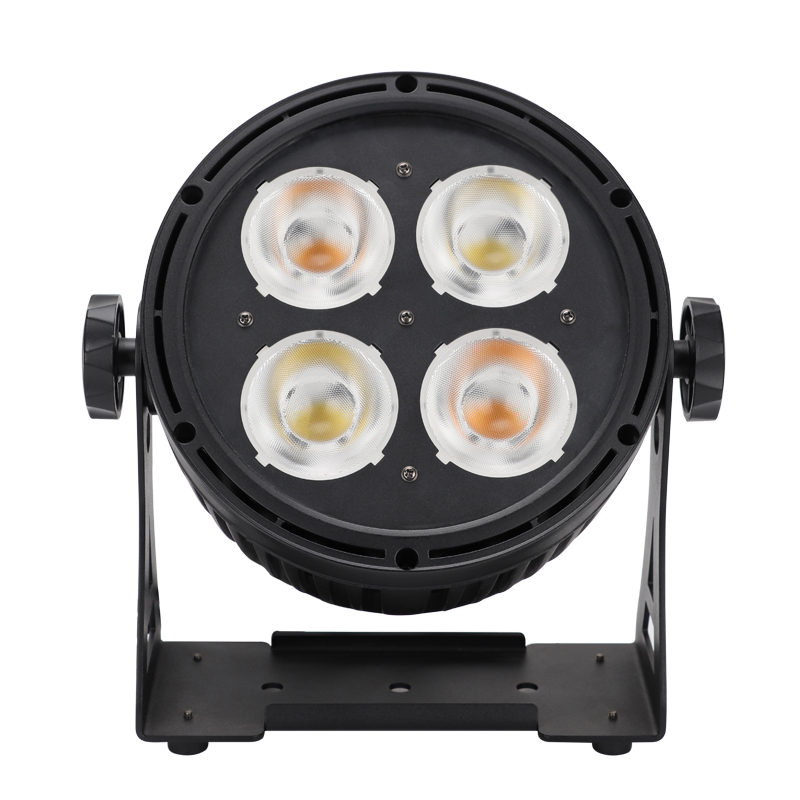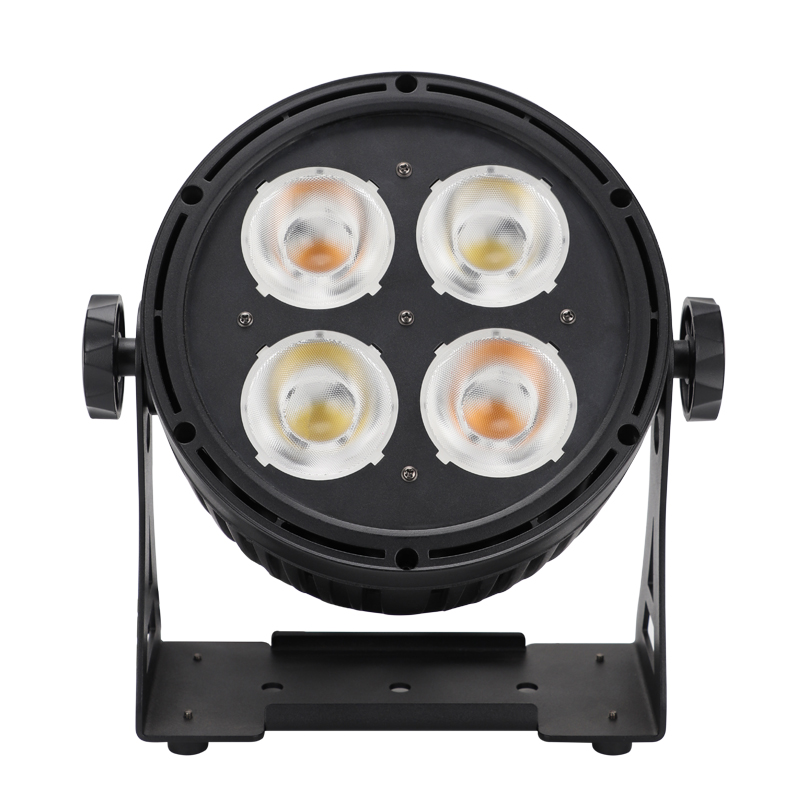Introduction: Light Is Color, and Color Tells the Story
Color temperature is one of the most fundamental aspects of lighting design. It doesn’t just affect how a performer or scene is seen—it influences how it's felt. Whether you’re lighting a theatrical production, a concert, or a corporate event, understanding color temperature helps you deliver immersive, emotionally resonant visuals.
This article explores what color temperature is, how it affects mood and visibility, and how modern fixtures like the P-1 COB LED Par Can Light give lighting designers precise control over warm and cool spectrums on stage.

1. What Is Color Temperature?
Color temperature, measured in Kelvin (K), describes the appearance of white light:
Warm white (around 3200K): soft, amber tones—similar to incandescent bulbs or sunset
Cool white (around 5600K): crisp, bluish tones—similar to daylight or overcast sky
Neutral white (around 4000K): balanced tone between warm and cool
The choice of color temperature dramatically affects how audiences perceive scenes, people, and objects.
2. Why Color Temperature Matters in Stage Lighting
On stage, color temperature does more than affect visibility—it establishes mood, contrast, and realism:
Warm tones enhance intimacy and nostalgia (e.g., candlelit dinners, dramatic monologues)
Cool tones emphasize clarity, space, or clinical emotion (e.g., futuristic sets, tension)
Mismatched color temperatures can cause awkward color casts on skin and costumes
That’s why fixtures with adjustable color temperature—like the P-1 COB LED Par Can Light—are preferred in professional settings where scenes shift quickly.
3. The Role of CRI and Light Quality
CRI (Color Rendering Index) measures how accurately a light source reveals the colors of objects:
A CRI of 90+ is ideal for theatrical, television, and high-end event lighting
Low CRI can cause colors to appear washed out, dull, or distorted
The P-1 COB LED Par Can Light is engineered with high CRI performance and consistent output across its warm and cool color settings, ensuring vibrant, natural tones regardless of temperature.
4. How to Use Color Temperature Creatively
a) Scene and Set Design Integration
Match lighting temperature to scene content:
Historical play = Warm white (~3200K)
Modern corporate set = Cool white (~5600K)
Abstract or stylized scene = Mix tones for effect
b) Skin Tone Matching
Different performers and costumes reflect color differently. Use adjustable lights like the P-1 COB LED Par Can Light to test and fine-tune tones during rehearsal.
c) Emotional Cues
Use subtle temperature shifts mid-performance to guide audience emotion:
Transition from warm to cool during moments of conflict
Cool to warm during romantic or peaceful scenes
5. Technical Tips for Stage Programmers
Lighting control consoles let you program temperature settings via DMX channels. For the P-1 COB LED Par Can Light, designers can:
Assign color temperature to a fader for real-time control
Use cue lists to fade between temperature ranges
Integrate with scenes for consistent color logic across space
In multi-fixture rigs, group similar fixtures and align temperatures for a uniform look—or intentionally mismatch for contrast.
6. Why the P-1 COB LED Par Can Light Is Ideal
Designed for stage versatility, the P-1 COB LED Par Can Light offers:
Dual-channel warm/cool control
High-powered COB LED chips for even, flicker-free light
IP65 waterproof rating for outdoor shows or wet effects
Portable and easy to rig in truss, ground-stack, or architectural setups
It’s a smart choice for any venue needing precise control over both function and feeling in lighting design.
READ MORE:
Products
Contact us





Blue Sea Lighting is an enterprise with rich experience in the integration of industry and trade in stage lighting and stage special effects related equipment. Its products include moving head lights, par lights, wall washer lights, logo gobo projector lights, power distributor, stage effects such as electronic fireworks machines, snow machines, smoke bubble machines, and related accessories such as light clamps.
Quick Links
For more questions subscribe to our email









